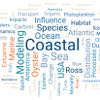
The 134 journal articles authored or co-authored by VIMS researchers in 2017 were talked about around the world. Here are the 15 that received the most "buzz."

The 134 journal articles authored or co-authored by VIMS researchers in 2017 were talked about around the world. Here are the 15 that received the most "buzz."
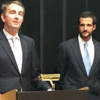
VA Governor-elect Ralph Northam has named Matt Strickler—a 2007 graduate of the Thomas Jefferson Program in Public Policy at W&M and VIMS—as Virginia’s next Secretary of Natural Resources.
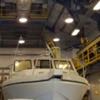
The latest grant from W&M's Committee on Sustainability will reduce electricity usage and improve working conditions on our Gloucester Point campus.
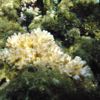
A new review article presents evidence that argues for a more nuanced approach to the design of global-change experiments—one that acknowledges and purposefully incorporates the variability inherent in nature.
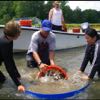
Shows that reefs built to reach a foot or more above the bottom develop into healthy, self-sustaining ecosystems, while those rebuilt at lower heights are quickly buried by sediment.
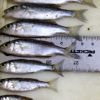
Researchers with VIMS' long-term survey recorded 8.98 young-of-year striped bass per seine haul in the Virginia portion of Chesapeake Bay during 2017, similar to the historic average of 7.77. The 2017 year class represents the group of fish hatched this spring that will grow to fishable sizes in three to four years.
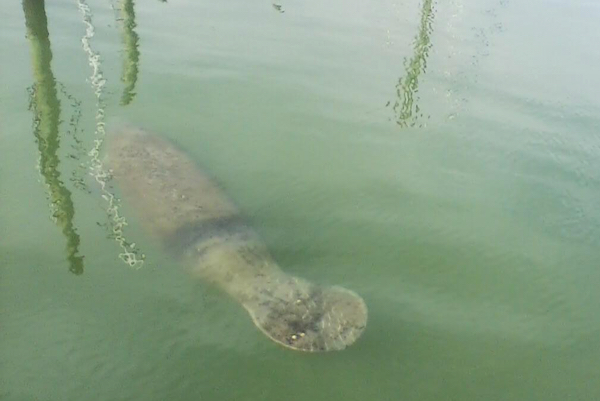
When seagrass researcher Cory Holbert glanced into the waters of the VIMS Boat Basin on the day after Halloween, you could excuse him for doing a double take.
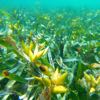
International research team gains knowledge useful for improving seed-based restoration efforts.

VIMS alumna Tami Lunsford (M.S. '02) is named Delaware’s first winner of a Milken Educator Award for her success in teaching science at Newark Charter High School.
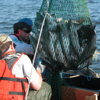
Provides indicators of fish health at time and space scales appropriate to guide management efforts for Chesapeake Bay.
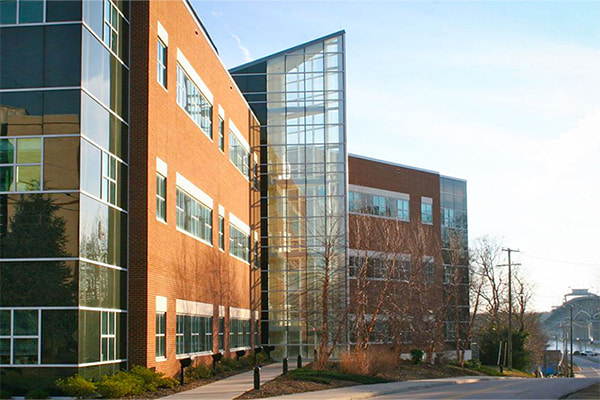
Oyster growers in Virginia’s portion of Chesapeake Bay can apply for funding through USDA’s Regional Conservation Partnership Program to help restore oyster beds on private shellfish grounds.
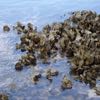
VIMS-led study is the first to identify and quantify potentially denitrifying bacteria in the oyster gut and shell, with important implications for efforts to reduce nutrient levels in coastal waters through oyster restoration.

The Peninsula chapter of the Associated General Contractors of Virginia hosted the 3rd annual Mermaid Cup golf tournament on September 20th at Kiln Creek Golf and Country Club in Newport News, supporting the Virginia Institute of Marine Science Foundation.
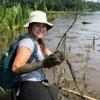
The Virginia Institute of Marine Science has announced the winners of its 18th annual photo contest, held to recognize the most notable images captured by VIMS faculty, students, and staff while conducting scientific studies in the field and laboratory.
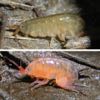
Salt marsh research shows that growing abundance of tiny shrimp infected by a microscopic parasite may portend future threats to humankind through disease.

Award recognizes assistant professor for his contributions to teaching and scholarship.
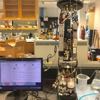
Local philanthropists Harry and Judy Wason fund purchase of an Imaging FlowCytobot to help Dr. Juliette Smith's research team detect harmful algal blooms in Chesapeake Bay.
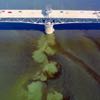
Public and private funding is helping VIMS researchers redouble their efforts to better understand and manage potentially harmful algal blooms in Chesapeake Bay and coastal waters around the U.S.
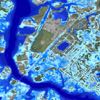
"Dress rehearsal" will help quantify local flooding risk and validate storm-surge models, while laying groundwork for long-term network of volunteer data collectors.
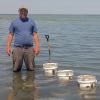
Funds will help early-career professor advance research and teaching related to coastal marshes and their response to sea-level rise.
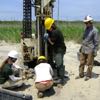
Dr. Christopher Hein and colleagues hope to help sustain NASA’s Flight Facility and Virginia’s Mid-Atlantic Regional Spaceport on Wallops Island.

The Virginia Institute of Marine Science officially welcomed 20 new graduate students to its Gloucester Point campus earlier this month.
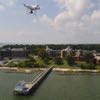
Provide ‘eyes in the sky’ to guide collection of water samples with much greater efficiency and lower cost.
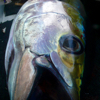
International research team shows negligible risk from consumption of meat from migratory marine predators following Fukushima nuclear disaster.
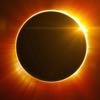
The story of how a solar eclipse helped solve an oceanographic mystery in the waters off Cape Cod.
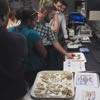
Faculty, staff, and students use opportunity to share how VIMS is working to address the myriad issues facing Chesapeake Bay and the coastal ocean.
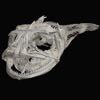
Doctoral student Diego Vaz uses CAT scans to illuminate details of the toadfish skeleton in exquisite detail, aiding efforts to resolve group's classification and taxonomy.
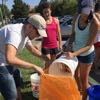
As beach season heats up around Chesapeake Bay, VIMS grad students use beach cleanups to help document and reduce marine litter.
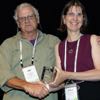
SWS President's Service Award recognizes Dr. Jim Perry for his significant contributions to Society's mission and members.
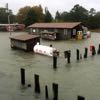
Dr. Derek Loftis is honored as ‘Emerging Leader’ during Capitol Hill Ocean Week and as a member of the winning team in the Amazon City on a Cloud Innovation Challenge.
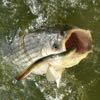
Good news is that threats to human health from this now-banned pesticide have largely abated, troubling news is that threats from new, undocumented contaminants persist.

VEE helps fund VIMS-Sea Grant partnership that gives students opportunity to help state agencies conserve natural resources.
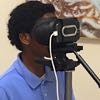
Exhibits and activities show how drones, VR goggles, autonomous underwater vehicles, and other tech help monitor coastal and bay health.

Annual survey of shellfish aquaculture shows Commonwealth's growers sold $56.6 million in clams and oysters in 2016.
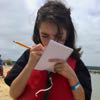
Intrepid journalists wonderfully describe all the fun and learning that takes place during the Institute's annual open house.

Nine students take part in commencement ceremonies at William & Mary.
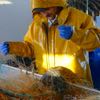
Work gains attention as the International Council for the Exploration of the Sea begins to use student-developed assessment methods to manage fish stocks worldwide.
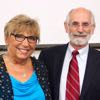
Each year the VIMS community gathers to recognize exemplary performance by faculty, staff, and students. Learn about this year's honorees.
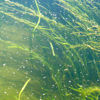
VIMS report shows the abundance of underwater grasses in Chesapeake Bay increased 8% between 2015 and 2016, continuing an upward trend initiated in 2012.

Professors Mary Fabrizio and Bongkeun Song will use stipends to engage students in field research and advisory service activities.
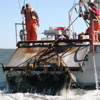
VIMS' 2017 winter dredge survey shows a 31% increase in adult female crabs and forecasts another year of improved harvests.
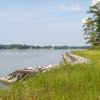
Donna Marie Bilkovic and Molly Mitchell are co-editors and authors of a new book that explores the benefits and challenges of using “living shorelines” to address coastal issues.
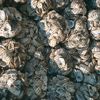
A. Marshall Acuff, Jr. has made a $5 million commitment to advance shellfish aquaculture research at VIMS and bolster the Oyster Disease Research Fund.
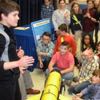
Virginia students use STEM (Science, Technology, Engineering, and Math) to explore 1918 disappearance of USS Cyclops.

The policy board for the Albemarle-Pamlico National Estuary Partnership names VIMS researcher Kirk Havens as chair of its leadership team.
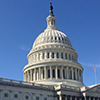
Three graduate students from W&M’s School of Marine Science at VIMS are using their science to better inform ocean-related decision making in our nation’s capital.
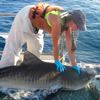
Population gains follow enactment of fishing regulations in the early 1990s after decades of declining shark numbers.

Marine science juggernaut will move on to represent Virginia at the National Ocean Science Bowl in Oregon in April.

Loss of eelgrass habitat and benefits from Chesapeake Bay during the last 30 years has come at a staggering ecological and economic cost.
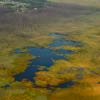
Scientists working on a rapid-assessment technique for determining saltmarsh vulnerability discovered that all of the marshes they field-tested are losing ground.

Research shows Virginia’s barrier islands are retreating up to 18 feet per year, with a resulting loss of at least 60 acres of saltmarsh annually.
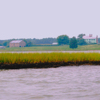
An international team including VIMS professor B.K. Song discovers that production of a potent greenhouse gas can be bypassed as soil nitrogen breaks down into unreactive atmospheric N2.
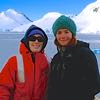
VIMS professor Elizabeth Shadwick has deployed a high-tech mooring beneath the seasonally ice-covered waters around Antarctica to better understand ocean acidification in polar regions.